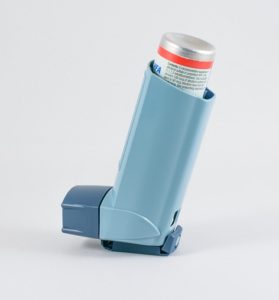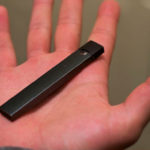There has been extensive research on the microbiome of the human digestive system, but not as much study of the typical bacterium present in our upper respiratory system.
Your Microbiome – Good and Bad Bacteria
Scientists classify bacteria as either beneficial or pathogenic.
You may be familiar with beneficial bacteria found in fermented foods like yogurt that help us digest our food, absorb nutrients and maintain a healthy digestive system. Most of us have been exposed to pathogenic bacteria like the ones that cause strep throat (Streptococcus), pneumonia (Streptococcus pneumoniae) and food poisoning (Escherichia coli and Salmonella).
Study Details
The Yellow Zone Inhaled Corticosteroids to Prevent Exacerbations (STICS) was conducted at the Washington University School of Medicine in St Louis and funded by the National Institutes of Health (NIH).
While the study was seeking to investigate the effectiveness of significantly higher doses of inhaled corticosteroids at the first sign of an asthma attack, the review of the nasal mucous samples revealed a distinct difference in the bacteria profile of the study participant’s upper respiratory biome between control and asthma flare up.
The study found no benefit to the larger doses of medication at the start of an asthma attack.
Study participants included 214 children with mild to moderate asthma that were currently treating their asthma symptoms and flare-ups with inhaled corticosteroids.
Curious Results
Nasal samples were collected from study participants twice. First when their asthma was under control, and when the participants had the signs of an emerging flare-up – known as the “yellow zone”.
The study data revealed that a rapid change occurred in the airway microbiome of study participants as they transitioned from respiratory health to disease.
Asthma in control: Microbiome dominated by beneficial bacteria
Yellow Zone: Microbiome contained bacteria associated with diseases like pneumonia and strep throat – Staphylococcus and Streptococcus.
Future Research Opportunities
This study showed a link between the bacteria and asthma symptoms but did not prove cause and effect.
Future study of the upper respiratory microbiome will help asthma researchers in their development of new asthma treatments. These new treatments might target the bacteria present in the upper respiratory microbiome in hopes of preventing asthma symptom flare ups.
Additional Resources
Study Information – Washington University School of Medicine
The Human Microbiome
Wearable Asthma Informatics: Future of Asthma Care in Children
Hidden Spots for Germs: Home, Office and Doctors Office

















 Fight Stress – Have your whole family learn a new technique to relieve stress such as yoga, mindfulness, or mediation. Parents need to practice what they preach!
Fight Stress – Have your whole family learn a new technique to relieve stress such as yoga, mindfulness, or mediation. Parents need to practice what they preach!
 An incredible amount of research has gone into childhood asthma in the last few years, leading to deeper understanding of the condition and better care for children with asthma.
An incredible amount of research has gone into childhood asthma in the last few years, leading to deeper understanding of the condition and better care for children with asthma. It’s that time of year again. A fun summer has come and gone and it’s time to start thinking about back to school. While stocking up on school supplies, don’t forget to prepare your child’s asthma plan for the new school year.
It’s that time of year again. A fun summer has come and gone and it’s time to start thinking about back to school. While stocking up on school supplies, don’t forget to prepare your child’s asthma plan for the new school year. New Generics available for 3 Asthma Medications: Advair Diskus, Ventolin, and Proair
New Generics available for 3 Asthma Medications: Advair Diskus, Ventolin, and Proair No one should be inhaling any of these toxic substances because they will all cause inflammation in your lungs. Asthma sufferers and those with allergies are especially at risk of exposure to lung irritants. Studies by the National Academies of Science indicate that e-cigarette use increases asthma symptoms such as coughing and wheezing.
No one should be inhaling any of these toxic substances because they will all cause inflammation in your lungs. Asthma sufferers and those with allergies are especially at risk of exposure to lung irritants. Studies by the National Academies of Science indicate that e-cigarette use increases asthma symptoms such as coughing and wheezing. The statistics on the rates of vaping are staggering. In 2018 the CDC reported that 20% of high school students vaped in the past 30 days. Smoking rates in the same age group are actually lower at only 8 percent. The rate of teen smoking continues to fall; it is 50% lower than it was in 2011.
The statistics on the rates of vaping are staggering. In 2018 the CDC reported that 20% of high school students vaped in the past 30 days. Smoking rates in the same age group are actually lower at only 8 percent. The rate of teen smoking continues to fall; it is 50% lower than it was in 2011. Your desk is ground zero for germs in the office. Recent studies showed that your desk can have 400 times more bacteria than a toilet seat. These unfriendly office visitors can survive up to three days on these surfaces. Everyone should disinfect their desk work surfaces including the keyboard, mouse and phone on a regular basis, but during cold and flu season it is even more important.
Your desk is ground zero for germs in the office. Recent studies showed that your desk can have 400 times more bacteria than a toilet seat. These unfriendly office visitors can survive up to three days on these surfaces. Everyone should disinfect their desk work surfaces including the keyboard, mouse and phone on a regular basis, but during cold and flu season it is even more important. The dirtiest parts of your home include the kitchen sink and drain, along with the sponges and dish rags you use to wipe the counter or wash dishes.
The dirtiest parts of your home include the kitchen sink and drain, along with the sponges and dish rags you use to wipe the counter or wash dishes. 
 One of the favorite kid friendly attractions at the fair is the petting zoo. Take the proper steps to protect yourself when visiting all of the adorable baby animals. Close contact with animals can trigger an asthma attack because you may come in contact with proteins that are found in animal saliva, skin flakes, urine and feces.
One of the favorite kid friendly attractions at the fair is the petting zoo. Take the proper steps to protect yourself when visiting all of the adorable baby animals. Close contact with animals can trigger an asthma attack because you may come in contact with proteins that are found in animal saliva, skin flakes, urine and feces. Summer is here! People with asthma should always be prepared for asthma triggers as the weather continues to get hotter.
Summer is here! People with asthma should always be prepared for asthma triggers as the weather continues to get hotter. 





 We hear all the time from multiple sources to get more exercise. Everyone has their reasons for not getting enough. We all know we should do it more, but feel like we don’t have enough time or energy to do so. If you suffer from asthma, you may fear that working out would make your symptoms worse. Here are some of the best options for exercising with asthma
We hear all the time from multiple sources to get more exercise. Everyone has their reasons for not getting enough. We all know we should do it more, but feel like we don’t have enough time or energy to do so. If you suffer from asthma, you may fear that working out would make your symptoms worse. Here are some of the best options for exercising with asthma Music is a wonderful stress release for many people. For some, the release comes from listening to the music and relating to the lyrics. It strikes a chord inside of us all. For others, making music is the release. Whether you play an instrument or sing, you are successfully dissolving the stress of your day-to-day. Congratulations! You have found an outlet.
Music is a wonderful stress release for many people. For some, the release comes from listening to the music and relating to the lyrics. It strikes a chord inside of us all. For others, making music is the release. Whether you play an instrument or sing, you are successfully dissolving the stress of your day-to-day. Congratulations! You have found an outlet. Summer is coming to a close for students in North Carolina. The change of seasons and environment can spell trouble for asthma and allergy sufferers. They already know their at-home triggers and how to combat them, but have less control over their environment at school. Common classroom triggers include pollen, dust mites, mold, chalk dust, and pet dander. With the help of school administrators and parents, students can remain focused on their studies and less on their allergies.
Summer is coming to a close for students in North Carolina. The change of seasons and environment can spell trouble for asthma and allergy sufferers. They already know their at-home triggers and how to combat them, but have less control over their environment at school. Common classroom triggers include pollen, dust mites, mold, chalk dust, and pet dander. With the help of school administrators and parents, students can remain focused on their studies and less on their allergies.









